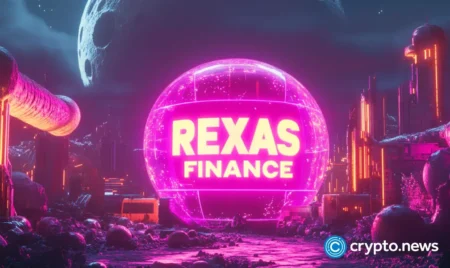Decentralized finance (DeFi) platforms offer the promise of democratized financial services but come with significant risks. Tobias van Amstel emphasizes that both newcomers and experienced users can navigate the complexities of DeFi lending by following a disciplined approach.
Understanding the Threats: Smart Contracts and Mismanagement
DeFi platforms, while revolutionary in their promise of democratized financial services, are not without risk. For both newcomers and seasoned participants, the landscape of DeFi lending can feel like a treacherous sea—fraught with hidden currents and unpredictable storms. However, as Tobias van Amstel, co-founder of the innovative DeFi platform Altitude, explains, users can still navigate these often-turbulent waters by simply following a straightforward and disciplined guide.
Van Amstel, an entrepreneur who successfully exited two Web2 technology companies before immersing himself in the crypto space in 2017, founded Altitude to address the frustrations he encountered firsthand in DeFi lending. During the so-called “DeFi Summer” of 2020, Van Amstel was an active borrower, deploying funds across platforms like Compound and Aave to pursue yield strategies.
His persistent challenge was the “trade-off between capital efficiency and risk,” which often meant locking up more collateral than ideal. Altitude was born from this very struggle, designed to optimize the lending mechanics Van Amstel once wrestled with personally.
According to Van Amstel, the most prominent security threats in DeFi lending stem from two main areas: First and foremost are smart contract vulnerabilities. These digital contracts, which automate agreements on the blockchain, are powerful but can be exploited if they contain coding errors or logical flaws.
“Bugs or exploits can lead to loss of funds,” Van Amstel states, underscoring that these technical weaknesses are prime targets for malicious actors and can lead to devastating losses for users.
Beyond technical glitches, he also points to “protocol mismanagement, such as poorly designed liquidation mechanisms.” These design flaws, if mishandled, can lead to cascading liquidations and significant financial impact for users, even without an external hack.
Van Amstel’s Playbook: Three Pillars of Protection
Despite these inherent risks, Van Amstel insists that users are not powerless. He outlines a series of fundamental precautionary steps that every participant should adopt:
Firstly, he urges users to prioritize transparency and verifiable security. “Stick to audited platforms with transparent documentation and open-source code,” Van Amstel advises. Independent security audits provide crucial validation, while open-source code allows the community to scrutinize the platform, fostering greater trust and accountability.
Secondly, a cautious approach to capital allocation is paramount. “Start small — test with minimal capital before scaling up,” he recommends. This strategy allows users to familiarize themselves with the platform’s intricacies and observe its performance in real-time, minimizing potential losses during the learning phase.
Finally, a deep understanding of loan mechanics is critical to avoiding painful surprises. “Understand liquidation thresholds and borrow conservatively to avoid being forced out of a position in a volatile market,” Van Amstel stresses. By maintaining a healthy collateralization ratio, users can create a protective buffer against sudden market downturns, preventing automated liquidations that can lead to significant losses.
The Path to Mass Adoption: Institutions and Market Growth
The discussion around DeFi extends beyond individual user safety to the broader question of institutional adoption. A recent JPMorgan report suggested that while DeFi could revolutionize financial services through cost savings and new opportunities via blockchain-based smart contracts, wider institutional embrace hinges on addressing security, regulatory compliance, and investor protection gaps.
When asked if these are indeed the primary hurdles, Van Amstel told Bitcoin.com News he largely agrees, particularly on the need for continued improvement in investor protection and security. However, he offers a nuanced perspective on regulatory compliance.
“Regulatory compliance is an interesting topic,” Van Amstel remarks, suggesting that DeFi’s inherent characteristics might necessitate a different regulatory approach compared to traditional finance (TradFi). “DeFi offers advantages that TradFi can’t — like transparency and instant settlement. This would potentially require less regulation.”
He illustrates this point by considering the challenge of illicit financial activities. “Take ponzi schemes as an example. It’s hard to keep a ponzi scheme going in a world where all assets and transactions are transparent on the blockchain.” This inherent transparency, he argues, could mitigate some risks that traditional regulations aim to address, potentially streamlining the path to compliance for legitimate institutional players.
While the challenges currently facing DeFi likely mean mass adoption is still some distance away, Van Amstel projects the sector to grow to $3 trillion in the next five years. “That’s just a 10x from current levels and still only about 2-3% of the total assets in traditional finance,” he asserts.
The growth of the space, he believes, hinges on security and user-friendliness. “Trust in fund protection is essential, making strong risk management a must. At the same time, intuitive design and better education are crucial to attract mainstream users, moving beyond the early adopters. That’s where true scale begins,” he explained.
Preserving Neutrality: A Stance Against Interventions
On a less related topic, the Altitude co-founder shared his viewpoint on market interventions. While he empathizes with users losing funds to hackers, Van Amstel says he is not in favor of interventions that undermine the very principles on which DeFi is founded.
“Intervening (even with good intentions) sets a dangerous precedent. Where do we draw the line? Should we also reverse fat-fingered transactions? Address MEV? Who gets to decide what’s eligible for intervention and what isn’t?” Van Amstel asks. He asserts that the industry’s long-term health hinges on preserving credibly neutral infrastructure rather than selectively rescuing funds. He views this as a “harder path, but ultimately a more resilient one.”
Meanwhile, Van Amstel reveals how Altitude is attempting to make DeFi loans more capital efficient. The platform aims to activate idle collateral that traditionally remains static in overcollateralized lending. Altitude employs automated strategies to deploy this unused capital into low-risk, yield-generating opportunities, thereby generating additional returns and potentially offsetting borrowing costs, even leading to self-repaying loans over time.
Van Amstel emphasizes that these smart automations are guided by principles of security and risk management, allowing Altitude to preserve the core benefits of overcollateralized lending while making users’ capital more productive and unlocking greater value from their assets.
Read the full article here










